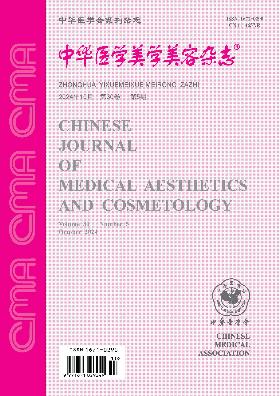唇腭裂患者牙面畸形关节正颌与正畸治疗的稳定性
引用次数: 0
摘要
目的评价腭裂患者与非腭裂患者联合正颌正畸治疗的骨骼稳定性。方法对15例被诊断为牙面畸形的腭裂患者进行联合正颌正畸治疗。在T0(治疗前)、T1(手术后2周)、T2(手术后6个月)和T3(手术后24个月)进行头部测量分析。在同一随访时间点,与非腭裂正颌组(n=15)进行上颌前后移动和上下移动的比较。结果腭裂组上颌向前移动(3.8±1.5)mm,向下移动(2.4±0.8)mm。复发距离AP方向为(1.2±0.7)mm(T1-T2:31.6%),垂直方向为(0.9±0.6)mm(T1-T2:37.5%)。术后24个月复发距离AP方向为(1.0±0.5)mm(T1-T3:26.0%),垂直方向为(0.8±0.8)mm(T1-T3:33.3%)。非腭裂组上颌骨向前移动(4.3±1.2)mm,垂直移动(2.2±1.9)mm。术后6个月,术前复发距离为(0.9±1.2)mm(T1-T2:20.9%),术后垂直复发距离(0.8±0.9)mm(T1-T2:36.6%)。术后24个月,复发距离前方为(1.1±0.6)mm(T1-T3:25.6%),垂直为(0.9±0.5)mm(T1-T3:40.9%)。结论腭裂组与非腭裂组术后复发率无统计学差异,但复发距离大于腭裂组。关键词:唇裂;腭裂;正颌外科手术;正畸固定程序;重复本文章由计算机程序翻译,如有差异,请以英文原文为准。
Stability of joint orthognathic and orthodontic treatment for dental-facial deformity in patients with cleft lip and palate
Objective
To evaluate the skeletal stability of joint orthognathic and orthodontic treatment for cleft patients compared with non-cleft patients.
Methods
Fifteen cleft patient diagnosed with dental facial deformities underwent joint orthognathic and orthodontic treatment. Cephalometric analysis was carried out at T0 (before treatment), T1 (2 weeks after surgery), T2 (6 months after surgery) and T3 (24 months after surgery). The comparison of maxillary anterior-posterior and superior-inferior movement was performed with non-cleft orthognathic group (n=15) at the same follow-up time point.
Results
The maxilla was move forward for (3.8±1.5) mm and downward for (2.4±0.8) mm of cleft group. The relapse distance was (1.2±0.7) mm (T1-T2: 31.6%) in AP direction and (0.9±0.6) mm (T1-T2: 37.5%) in vertical direction. At the time of 24 months after operation, the relapse distance was (1.0±0.5) mm (T1-T3: 26.0%) in AP direction and (0.8±0.8) mm (T1-T3: 33.3%) vertically. In non-cleft group, the maxilla was move (4.3±1.2) mm anteriorly and (2.2±1.9) mm vertically. The relapse distance was (0.9±1.2) mm (T1-T2: 20.9%) anteriorly and (0.8±0.9) mm (T1-T2: 36.6%) vertically at 6 months post-operatively. At 24 months after surgery the relapse distance was (1.1±0.6) mm (T1-T3: 25.6%) anteriorly and (0.9±0.5) mm (T1-T3: 40.9%) vertically. There were no statistical significant in both 6 months and 24 months follow-up between cleft and non-cleft group (P>0.05).
Conclusions
There is no statistic difference of post-surgical relapse rate between cleft and non-cleft orthognathic and orthodontic treatments, although the relapse distances are greater than that in cleft group.
Key words:
Cleft lip; Cleft palate; Orthognathic surgical procedures; Orthodontic anchorage procedures; Recurrence
求助全文
通过发布文献求助,成功后即可免费获取论文全文。
去求助
来源期刊
自引率
0.00%
发文量
4641
期刊介绍:
"Chinese Journal of Medical Aesthetics and Cosmetology" is a high-end academic journal focusing on the basic theoretical research and clinical application of medical aesthetics and cosmetology. In March 2002, it was included in the statistical source journals of Chinese scientific and technological papers of the Ministry of Science and Technology, and has been included in the full-text retrieval system of "China Journal Network", "Chinese Academic Journals (CD-ROM Edition)" and "China Academic Journals Comprehensive Evaluation Database". Publishes research and applications in cosmetic surgery, cosmetic dermatology, cosmetic dentistry, cosmetic internal medicine, physical cosmetology, drug cosmetology, traditional Chinese medicine cosmetology and beauty care. Columns include: clinical treatises, experimental research, medical aesthetics, experience summaries, case reports, technological innovations, reviews, lectures, etc.

 求助内容:
求助内容: 应助结果提醒方式:
应助结果提醒方式:


